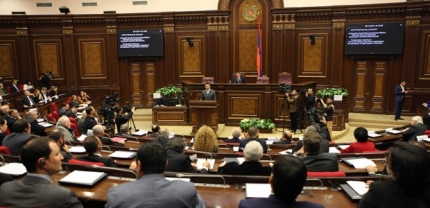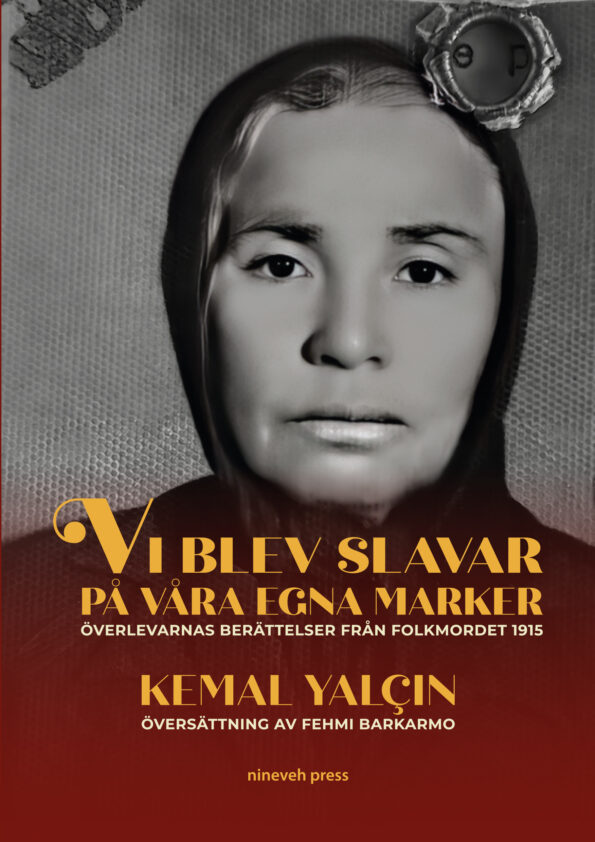They lead us to question whether the issue of religious conflict has undermined any democratic intentions in its aftermath. Where there is no religious tolerance, there is no hope for democracy, only conflicts of self-interests. Good relationships between religions and creeds are crucial to building a healthy, democratic and stable society, providing equality before the law, and protection from arbitrary violence. More importantly, every society needs a moral conscience. Wherever there is religious intolerance, it is the minority communities that suffer the most. Sadly, these indigenous minorities of the Middle East are dwindling, and becoming even more vulnerable.
Illustrative of this is the case of the Saint Gabriel Monastery in Turkey, founded in 397 AD. The monastery is the oldest and most significant cultural and religious hub of the ancient Assyrians, but its future is under threat. In 2004, when a new “property land registry work law” was introduced by the Turkish government, the three surrounding Kurdish villages were enabled and subsequently encouraged to take the monastery to court. In 2008, the village leaders accused the monastery of proselytization for accepting students to whom they could pass down the Christian faith. They also claimed that there was previously a mosque at the site of the monastery, despite the monastery having been built over two hundred years before the advent of Islam, and requested that its land be divided among the villagers. In its 2006 resolution, the European parliament considers this issue a matter of human rights law. What is felt to be the latest “campaign of intimidation” against the Assyrian community also serves to remind them of their painful past.
The Assyrians and other indigenous Christians of the Middle East constitute a rapidly declining population in the region. The Assyrians, a once strong and vast nation of around one million members in Turkey, pioneers from the year 2400 BC in the fields of medicine, education, law and astronomy, have been reduced and indeed, all but erased by endless persecution. They now number a mere 5,000. Before the First World War, Christians comprised 33 percent of the population in Turkey. Presently they make up 0.1 percent—a result of massacres, forced emigration and later migration. Today, the Assyrians are not even recognized by Turkey as a minority group. Many in this community feel they have been victims of a cycle that seems destined to wipe out not only their existence but also the memory of their existence. Indeed, this, along with the deprivation of land rights, has been cited by genocide scholars such as Raphael Lemkin as the final the step in the act of genocide.
On 14 November 1914, at the onset of the First World War, Sheikh Al-Islam declared a holy war against all Christians of the Ottoman Empire. The ensuing Armenian genocide, of 1915, is well known and documented, but few are aware of the massacres of Assyrians, Chaldeans and Syriacs that also occurred. Professor Richard Hovannisian asserts in his volume of essays on the Armenian genocide, Anahit Khosroeva of the National Academy of Sciences of Armenia, that between the years 1895-1922 in Turkey, when 802,947 Armenians were slaughtered, two thirds of the entire Assyrian population also lost their lives. This “missing chapter” in history can be explained by its being overshadowed by the Armenian plight and also by legally sanctioned censorship in Turkey, as well as the government’s active funding of alternative historical literature in the US and Britain, praising the Ottomans and portraying their victims as rebels deserving of their punishment.
Turkey has attributed the events to “civil war and unrest,” not to genocide, and this is their reason for the absence of an official apology. Yet eyewitness accounts and testimonies from diplomats and missionaries left in telegrams, letters and reports to their superiors tell a different story. In April 1916, the German imperial chancellor was informed by a report that the Assyrians of the east Ottoman Empire had been exterminated. While an initial 1922 Assyrian assessment set the number at 250,000, recent revisions have brought the number of Assyrians killed to 750,000. Can this really be accounted for by the ravages of a civil war?
It is widely known that the Turks mobilized local minority Kurdish tribes by using anti-Christian propaganda, as well as bribery and the provisions of arms, thus employing a divide and rule strategy. In 1995, the parliament of Kurdistan in exile issued this acknowledgement: “Ottoman administrators began a policy of annihilating the Armenians and Assyrians…with the aid of some tribal Kurds,” with the result that “millions of Armenians and Assyrians were murdered.”
In January 1915, in just the one district of Urmeiea, 70 villages were attacked and plundered. Turks and Kurds massacred the Assyrians of Amadia in May 1915 before turning their attention to the Chaldeans in the district of Siirt. The Assyrians of the Gawar district, Harput, Husankeyf and Urfa were also decimated in June. All those who were not killed were forced to flee their destroyed and burning villages, and make the long journey to Syria, Lebanon and Jordan by horse-drawn carts and caravans, or on foot, leaving behind their homes and possessions. Many died during the long and arduous journey.
Reasons for the genocide may have been to cleanse the Turkish heartland, for fear of Christian collaboration with minority Kurds or with Russia in the impending world war. Some argue it was a Turkish response to the Armenian uprising against them for occupying some of their land, although the massacres extended far beyond armed resistance and do not justify the killing of the Assyrians, Syriacs and Chaldeans, who were not involved. Social historian David Gaunt found that, although wholly unfounded, Turkish fear of a Christian revolt seems to be central to the massacres. Whatever the reason, no argument could ever excuse the destruction of villages, the butchering of thousands of innocent victims, young and old, and the rape, slaughter and kidnap of women and children, documented in detail by eyewitnesses as being some of the most relentless and inhumane acts.
The violent events of 1915 have come to be known as Seyfo, or the Year of the Sword, to the Assyrian community but were by no means isolated. Rather, they were a climax to the continual massacres that had occurred during the reign of the Ottoman Empire. In just two years from 1843-1845, according to British representatives and western missionary sources, 10,000 Assyrians were slaughtered. Since then there have been many more massacres of this community, but 1915 was by far the most brutal in terms of numbers. The Assyrian genocide has been recognized by the Swedish Parliament, the International Association of Genocide Scholars (IAGS) and the Armenian American Association (AAA). Turkey continues to deny the genocide, though it has officially and rightly recognized genocides elsewhere, involving smaller numbers of victims and smaller target groups, such as Bosnia and Kosovo in the former Yugoslavia.
In 2009, Turkey’s Prime Minister, Tayyip Erdogan, made the bold statement that the incidents of ethnic cleansing by past Turkish governments were acts of fascism, saying that, “for years those of different identities have been kicked out of our country.” It was a move criticized and contested by his parliament, yet welcomed by the minority communities. However, reservations have been cast on his sincerity, and the much requested official apology has yet to come.
In order to find a solution to current conflicts we need to revisit recent history, study what happened, acknowledge positive aspects and condemn negative ones. Otherwise, fundamentalist and racist behaviour is implicitly condoned with silence. When genocide goes unrecognized, it creates a mentality in the community that these acts bear no consequences, and society does not progress. The persistence of the denial of Ottoman crimes also contributes to the mistrust and continuous persecution of their victims today. According to Sabri Atman, founder of the Assyrian Seyfo Centre in Europe, “The denial… has perpetuated the current condition seen since 1915 to that currently being perpetrated against the Assyrians in modern day Turkey, Iraq and Iran.” The pressure is now on Turkey to take this opportunity to set a good example to other states. Before this can happen, Atman asks: “Should they leave behind the same mentality today that was in existence when the genocide took place?’
Hannibal Travis, author of Genocide in the Middle East: The Ottoman Empire, Iraq and Sudan, argues that “implementation of international law would solve the problem,” adding “International law prohibits denial of genocide or crimes against humanity, requires the payment of reparations and ensures equality for members of cultural, religious, ethnic and political minorities as well as indigenous people.”
Almost every member of the Assyrian, Syriac and Chaldean communities have had a family member killed or kidnapped and forced into marriage during the events of 1915. But justice can come in many forms, and while some might fear that the Assyrian community would demand reparations—as in the case of Nazi Germany—families of the victims simply want an official Turkish apology—an admission that this was genocide, and a one sided attack against their own, innocent people. Many feel that, until this happens, the souls of millions so unjustly killed cannot rest in peace. The community needs closure, because for all those who lost an aunt, uncle and grandparent, as well as their homeland, the gruesome tale of an attempted systematic destruction of their people is still felt today, and still very much alive.
By A. Lilith



